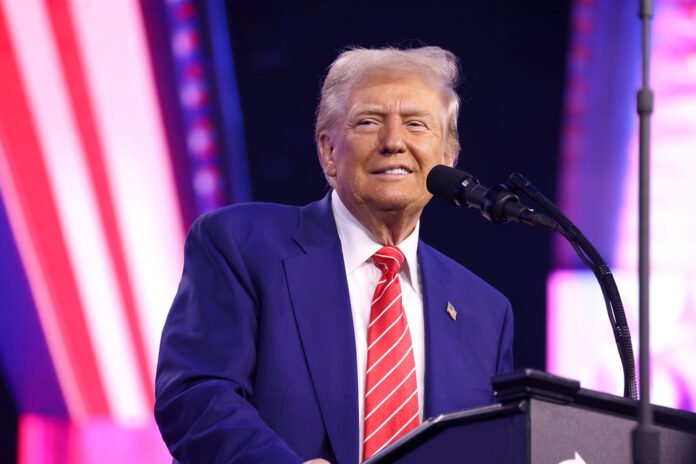In a stunning reversal that has sent shockwaves through global financial markets, US President Donald Trump announced a pause to the sweeping global tariffs he imposed just a week ago — except for China, where tariffs have been raised even higher. This latest development comes amid conflicting messages from the White House and senior officials, leaving world leaders and investors scrambling to make sense of what happens next.
Markets Rally Despite Confusion
The announcement triggered an immediate surge in global stock markets. The S&P 500 had one of its strongest days in postwar history, soaring by 9.5%, while Asian indices followed suit overnight. Despite the market relief, analysts and economists cautioned that the damage from Trump’s erratic trade policy may not be easily undone.
READ MORE: Trump Threatens New Tariffs on Pharmaceuticals as Tensions with Australia Mount
“THIS IS A GREAT TIME TO BUY!!!” Trump declared on Truth Social, sending a message that coincided with a rapid uptick in market activity. Treasury Secretary Scott Bessent called it “one of the most extraordinary Truth posts of his Presidency.”
What the New Tariff Structure Looks Like
Under the revised policy:
- China: Tariffs were increased dramatically to 125%, adding to the existing 25% baseline and bringing some Chinese imports to a staggering 150% rate. Trump doubled down on his criticism of China, accusing it of “ripping off the USA.”
- Other Countries: Tariffs imposed last week were dialled back to a uniform 10% for all other countries. Nations such as India (previously 26%), Vietnam (46%), the EU (20%), and the Falkland Islands (41%) have now seen their rates reduced to this new baseline.
- Canada and Mexico: Confusion reigned over their status. While Bessent initially claimed they would also benefit from the 10% rate, the White House later stated their higher rates would remain in place.
The 10% rate is in place for 90 days, pending negotiations. Tariffs could be reinstated or increased without notice.
A Death Blow to China Trade?
Analysts say that the new tariffs on China are so severe that they may be largely symbolic. The World Trade Organization predicts trade between China and the US could fall by as much as 80% or $466 billion per year.
Bessent claimed the strategy was to expose China’s role as a “bad actor” on the global stage, while Trump softened his tone later, saying President Xi Jinping is “a smart guy” and expressing hope for a “very good deal.”
Impact on Australia and Other Allies
The rollback brought some relief to US allies including Australia, which had initially been hit by the blanket tariff hikes. Australia, previously targeted despite being a close strategic and trade partner, is now on the 10% tariff list like most others.
Prime Minister Anthony Albanese and Opposition Leader Peter Dutton reiterated that Australia’s Pharmaceutical Benefits Scheme (PBS), previously targeted in remarks by Trump and trade chief Jamieson Greer, is “not up for negotiation.”
Greer had controversially remarked that the US should be “running up the score” with Australia to address the wider trade deficit. Senator Mark Warner rebuked the comment, calling it “insulting to the Australians” and damaging to bilateral relations.
Why Did Trump Blink?
The reasons for Trump’s abrupt shift remain murky. While White House Press Secretary Karoline Leavitt claimed it was all part of a long-term strategy — “the art of the deal” — Trump himself painted a less calculated picture.
“They were getting a little bit yippy, a little bit afraid,” Trump said of market reactions. “A lot of times it’s not a negotiation until it is.”
Economist Mohamed El-Erian suggested Trump’s hand was forced by a sell-off in US government debt — a red flag for global investors. According to The New York Times, top advisors warned the president that investor confidence was eroding rapidly.
Implications for the Global Economy
Despite the euphoric market response, long-term economic concerns remain. The World Trade Organization estimates the new China tariffs could reduce global GDP by nearly 7% over time. Even with a 10% tariff across the board, the effective average import tariff is now close to 20% — the highest since the 1930s.
Bob Elliott, a hedge fund manager, called the market rally “likely far too positive.” He pointed out that the broader economic impact of such protectionism could severely hamper trade, investment, and job creation.
UK Reaction and Uncertain Future
The UK, already on the 10% tariff baseline, sees no direct impact from the rollback. However, the lack of a unique preferential rate now erases any competitive edge. Prime Minister Keir Starmer warned of retaliatory measures, saying that “a trade war is in nobody’s interest.”
Whitehall officials, meanwhile, remain sceptical about the likelihood of reaching a deal to reduce tariffs further.
A Temporary Reprieve or the Calm Before the Storm?
The short-term market optimism may mask longer-term instability. With tariffs paused for just 90 days and rhetoric against China intensifying, the world remains on edge. Experts warn that companies may remain hesitant to invest or hire until they see sustained stability.
Jake Schurmeier, portfolio manager at Harbor Capital Advisors, summed up the sentiment: “Good news doesn’t eliminate the overarching uncertainty. We [will] likely go higher for a few days, but I think permanent damage has been done.”
For now, the global economy watches and waits — hoping that cooler heads will prevail and that this latest policy U-turn marks a step back from the brink rather than a tactical retreat in an ongoing economic war.
